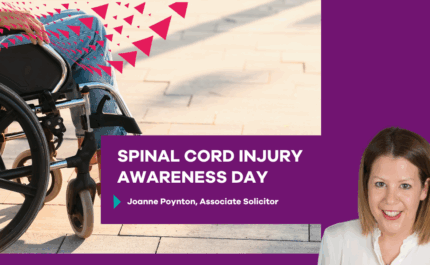
There is no doubt that advancements in technology in the manufacturing of e-bikes is impressive, but there is commentary that it is not a significant departure from what a consumer would experience in contrast to a regular bicycle. Granted, it is possible to cycle great distances with very little effort, but there is still the same difficulty in transporting the bicycle (they tend to be heavier than regular bikes, so carrying them far or lifting onto public transport could be problematic). There is limited versatility when introducing it into our commutes and routines and, aesthetically, they don’t look any more appealing than a regular bicycle.
I’ve always thought scooters generally were more convenient than a bicycle. They can be carried in a backpack, put on the luggage rail on a train and introduced into your commute much more easily than a bicycle. Use and popularity of scooters never really caught on however, probably because they were once thought of more as a child’s toy, and never really represented a viable mode of transport. Uphill journeys were more difficult and slower than walking and anything beyond a paper flat surface would result in being violently jarred and shaken.
E-scooters are different. There’s good logic to their introduction to our routines. They appear convenient, allowing people to cover great distances with very little effort. They’re economical, and they’re compact enough to be able to be a part of our commutes and routines without having to really adapt. Whilst the e-scooters are obviously bulkier than a non-motorised scooter, they still generally fit into the luggage compartment on a train and can easily be transported in the boot of a small car, or even, possibly a large backpack when not being used.
There is some concern that, in light of the popularity of e-scooters, and the number of brands entering the market, manufacturers will turn their attention to improving their appeal and capturing larger proportions of the market by focusing on increasing the speeds (many can easily each 30mph), increasing their efficiency and their versatility, before focusing on the less appealing tasks such as improving safety and improving the capacity to regulate the use of their product.
At Minster Law, we’re presently assisting several claimants who have been injured either using an e-scooter, or because of another rider of an e-scooter.
Concerningly, the number of cases is rising, and does not appear related solely to the fact that e-scooters are a new, and a relatively unknown, introduction to our routines. One would like to think that as they become more common, there would be a greater and broader public understanding as to how to guard against the dangers presented by e-scooters on our roads, but the number and frequency of accidents continues to rise and there is little evidence of any lessons being learned.
In addition, the injuries we’re seeing reported, seem to be disproportionate to the speeds and mechanisms of the accidents. This may well be a consequence of the general design of a scooter which may increase the propensity for a user to fall awkwardly. E-scooters are generally top heavy when being ridden, they feature tiny little wheels and don’t appear to afford the same balance, control, or support as one would find in a bicycle. Turning and braking on a bicycle is not particularly hazardous considering the capacity to lean to either side while still sitting squarely behind the handlebars, whereas this doesn’t seem to be the case with e-scooters.
The injuries that we’re seeing from the use of e-scooters are, all too frequently, proving to be severe, even when, in many cases, the actual mechanics and speeds involved in the collisions are relatively modest.
The rider of an e-scooter should most certainly fall within the remit of a vulnerable road user, but they still have capacity to cause serious harm to other traffic and road users also.
We are presently dealing with one such case. Our client was riding his motorcycle on his 17th birthday when the rider of an e-scooter ran through a red light, in the middle of a busy carriageway, into the path of our client. The rider of the e-scooter was under 16 years old, not wearing a helmet and had his friend stood on the back of the e-scooter, essentially as a pillion passenger.
Our client sustained serious facial injuries, requiring surgery, and is experiencing a lengthy and difficult recovery.
In terms of progressing the claim, the options open to our client were limited. The e-scooter was being used in an area which was not subject to any of the trials for rental e-scooters and we were able to discount the prospect of any liability insurance quite quickly being available.
Recovering compensation and costs from the defendant directly carried very little merit and, as such, our client’s only practical recourse was to approach either the Motor Insurance Bureau (MIB) or the Criminal Injuries Compensation Authority (CICA).
Often, as in our client’s case, the circumstances concerning the use of an e-scooter would appear to be riddled with actions and conduct which one would expect to amount to, or support, criminal offences. i.e., use of an e-scooter on public property, failure to install insurance, failure to observe traffic signals, failure to comply with the highway code and often failure to exercise any reasonable care and attention. But any prospect of a claim via CICA in respect of an e-scooter claim is low as the crime would need to amount to a ‘crime of violence’ and despite the arguable violent nature of these accidents, it would be necessary to prove that there was an intention to use the vehicle to cause injury as provided for by Annex B: (4) of the CICA Scheme.
Fortunately, MIB does provide opportunity to pursue a claim for damage. It is accepted that an e-scooter falls within the definition of a motor vehicle for the purpose of section 185 Road Traffic Act 1988 and, thus, falls within the remit of the uninsured driver’s agreement. It remains necessary for the Claimant to prove negligence, damage, and loss but, subject to this and pending the Claimant having the patience to deal with MIB presently, there is prospect in them being compensated.
This is obviously not satisfactory and cannot be accepted as a long-term solution. The increasing claims, and the limited resources available to MIB and the restrictions in costs associated with pursuing claims via the MIB agreements are going to drive difficulties in ensuring that injured claimants have their cases dealt with justly. It is also worthy of note that these potentially expensive claims through MIB will be funded by car insurance premiums.
Unfortunately, I believe that we’re already on the back foot in respect of managing these e-scooter claims. They are rising and even if regulation is introduced, it is likely to take some time to assist in plateauing and, hopefully, reducing the number of claims.
In addition to the introduction of regulation, I would like to see some effort to limit the number of e-scooters on the roads in a bid to afford opportunity to stall the increasing number of claims. In respect of this, I would propose that the trials for rental e-scooters should be brought to a halt. There was a backwards introduction in my view in that regulation should be introduced before we start seeing e-scooters as a commonplace item in our city centres. As more people observe them in the city centres, more people will likely purchase one and we enter a vicious circle. As with many such evolutions in technology, education and regulation of the risks should be introduced before the risk itself. In my view, the e-scooter was a hit and hope event that has not proven successful, and a speedy re-think is necessary to protect road users.



